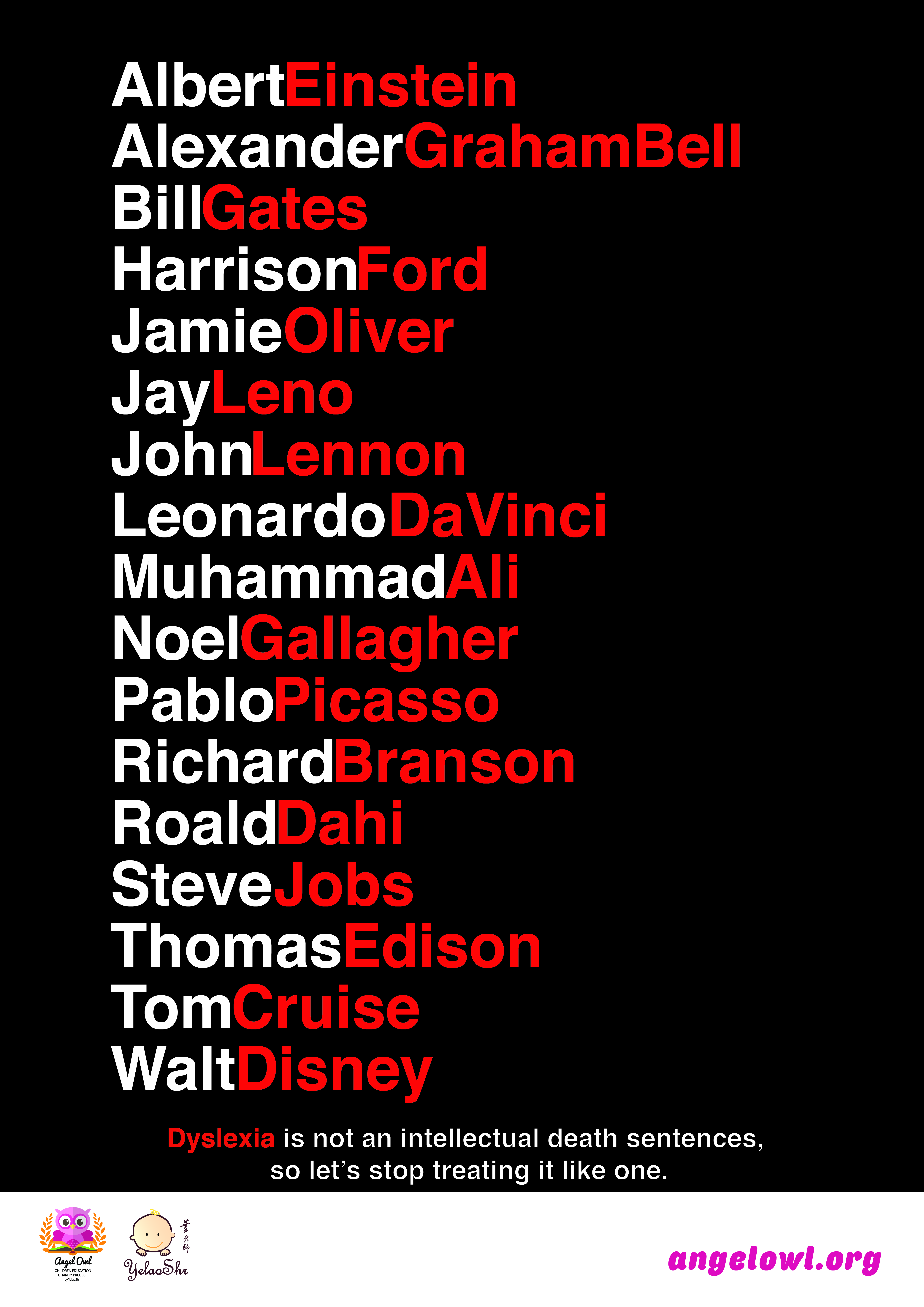“Mommy, I see dancing ABC!”
One out of every 10 children in Asia has dyslexia, one of the most common learning disabilities (LD). It is estimated that nearly 10% of pupils in Asia are facing difficulties in reading and writing.
One out of every 10 children in Asia has dyslexia, one of the most common learning disabilities (LD). It is estimated that nearly 10% of pupils in Asia are facing difficulties in reading and writing. Dyslexia is a neurological term used to describe children with significant impairment in reading and writing. It is a rather common neurological syndrome characterized by inability to read and write, accounting for about 85% of the learning disabilities faced by children, making it one of the main causes of poor learning performance in children. The term ‘learning disability’ was first coined by Samuel A. Kirk, an American special education expert. Dyslexia refers to an unexpected difficulty in reading exhibited by some children and adults who otherwise possess normal and high intelligence. Studies show that it is not related to intelligence but rather caused by abnormal development or function in the brain.“Dear, you are part of them”
Many renowned and accomplished people are living with dyslexia. Here are some of the “cool dyslexics” around the world:- Richard Branson, the founder of Virgin Group
- Lee Kuan Yew, the first Prime Minister of Singapore
- Albert Einstein, German physicist and mathematician
- Leonardo da Vinci, Italian Renaissance artist
- Tom Cruise, American actor
- Jam Hsiao, Taiwanese singer
- Thomas Edison, American inventor
- George Washington, the first President of the United States
- John F. Kennedy, the 35th President of the United States
- Steve Jobs, the co-founder of Apple, Inc.
How Do You Know Your Child Might Have Dyslexia?
- Your child struggles to read and often misread words easily;
- Your child does not understand what he or she reads;
- Your child can’t read smoothly, tends to skip words or sentences;
- Your child shuns writing, has difficulties in writing, his or her handwriting is messy and error-ridden;
- Your child takes a long time to copy a sentence or passage, constantly referring to the given text and copying stroke by stroke;
- Your child has a short attention span;
- Your child has low auditory working memory and seems to be restless;
- Your child is inactive and has poor sense of balance;
- Your child has poor pencil grip and is clumsy in tying shoelaces and holding chopsticks;
- Your child is weak in interpersonal skills, introverted, shy or impatient;
- Your child lacks self-confidence and gives up easily;
- Your child is smart but performs poorly in school.




